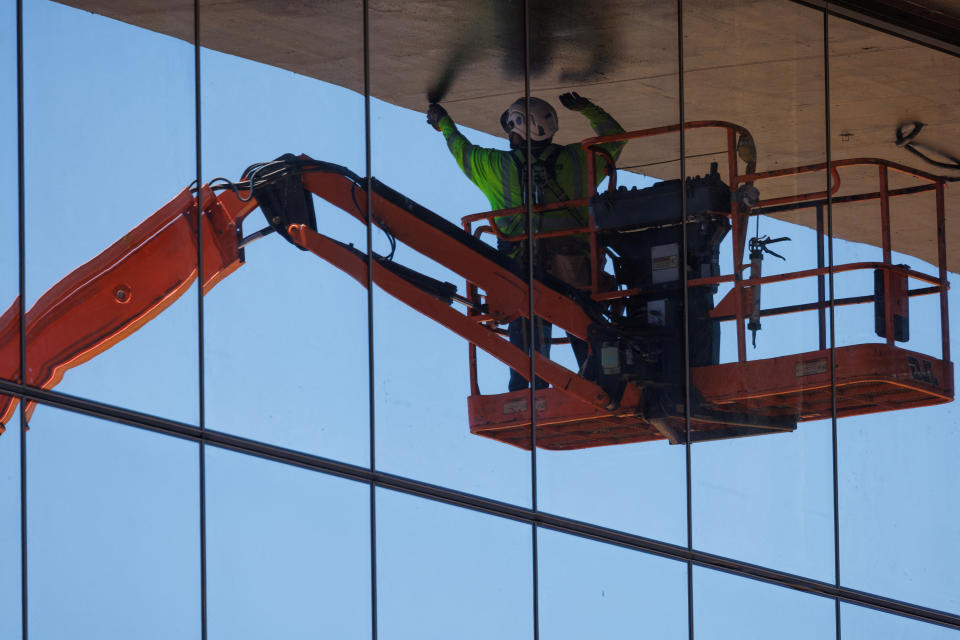The US economy added fewer jobs than expected in July, as the unemployment rate rose to its highest level in nearly three years, the latest sign of a slowdown summer boom in the US labor market.
Data from the Bureau of Labor Statistics released Friday showed the labor market added 114,000 non-farm payroll jobs in July, which was less than the 175,000 additions expected by economists.
Meanwhile, unemployment rose to 4.3%, up from 4.1% in June. The unemployment rate is now at its highest level since October 2021. July’s job gains were lower than the 179,000 jobs added in June.
Notably, the BLS said Hurricane Beryl had “no discernible effect” on employment data for July.
Earnings growth, a key gauge of inflationary pressures, fell to 3.6% for the year, down from 3.9% in June. On a monthly basis, wages increased by 0.2%, which is lower than the 0.3% gain seen in June. Friday’s report also showed the labor force participation rate rose slightly to 62.7% from 62.6% in June.
In a note to clients on Friday, Stephen Brown, deputy chief economist for North America at Capital Economics, said the report could change the Fed’s thinking about cutting interest rates in September.
“A sharp decline in wages in July and a sharp rise in the unemployment rate make a September interest rate hike inevitable and will increase sentiment that the Fed will begin its rate hike.” lower the rate of 50 bp or even the movement of assembly,” Brown. wrote.
Markets moved quickly Friday morning to buy in about a 70% chance the Fed will cut rates by 50 basis points at the end of its September meeting, according to CME Group. Just last week, there was an 11.5% chance of the Fed cutting rates by this much.
Friday’s report is also the latest in economic data to show signs of cooling across the US economy. Data from the Labor Department released on Thursday showed 249,000 initial jobless claims were filed in the week ending July 27, up from 235,000 the previous week and the most since August 2023.
This followed a report earlier this week that showed a decline in job openings at the end of June, as hiring fell and retirements hit their lowest level since November 2020.
The data mix sent the market into a sell-off on Friday as the 10-year Treasury yield fell to its lowest since February, near 3.86%.
Stocks extended steep losses from Thursday morning into Friday. The S&P 500 (^GSPC) was down more than 1% while the Nasdaq Composite (^IXIC) slipped nearly 2%.
Sahm Rule fueled the recession
The unemployment rate, which reached 4.3%, also triggered Sahm’s Law, which measures the three-month average of the national unemployment rate against the previous 12-month low. This law kicks in when unemployment rises 0.5% from that level and has successfully predicted 100% recessions since the early 1970s.
Economist Claudia Sahm, the law’s namesake, told Yahoo Finance on Friday that the unique dynamics of the labor market after the pandemic could make the law ineffective in calling a recession this time. .
Sahm said he does not believe the US economy is in a recession right now, seeing strong consumer spending as another reason. However, Sahm added, the easing of the labor market is “worrying” and could point to a recession in three to six months.
“We should be very concerned,” Sahm said.
The key issue, Sahm asserts, will be the Fed lowering interest rates.
When asked if he was concerned about the Sahm Act presented at a press conference on Wednesday, Federal Reserve Chairman Jerome Powell said, “The question is one of whether we are concerned about a major stock market collapse.” employees. The answer is that we are looking closely at that.”
He described this law as a “statistical process,” adding, “It’s not like an economic law that says something has to happen.”
Powell added that the Fed is now paying more attention to more than just inflation risk not fall, but also the risk of unemployment continues to be a high signal. For now, Powell said the Fed still believes the labor market is continuing to “slowly normalize.”
“If we start to see something that looks like it’s over there, we’re in a good position to respond,” Powell said.


Josh Schafer is a reporter for Yahoo Finance. Follow him to X @_joshschafer.
Click here for an in-depth analysis of the latest stock market news and events that drive stock prices
Read the latest financial and business news from Yahoo Finance
#July #jobs #report #Unemployment #rate #rises #job #gains #job #cuts #deepen



